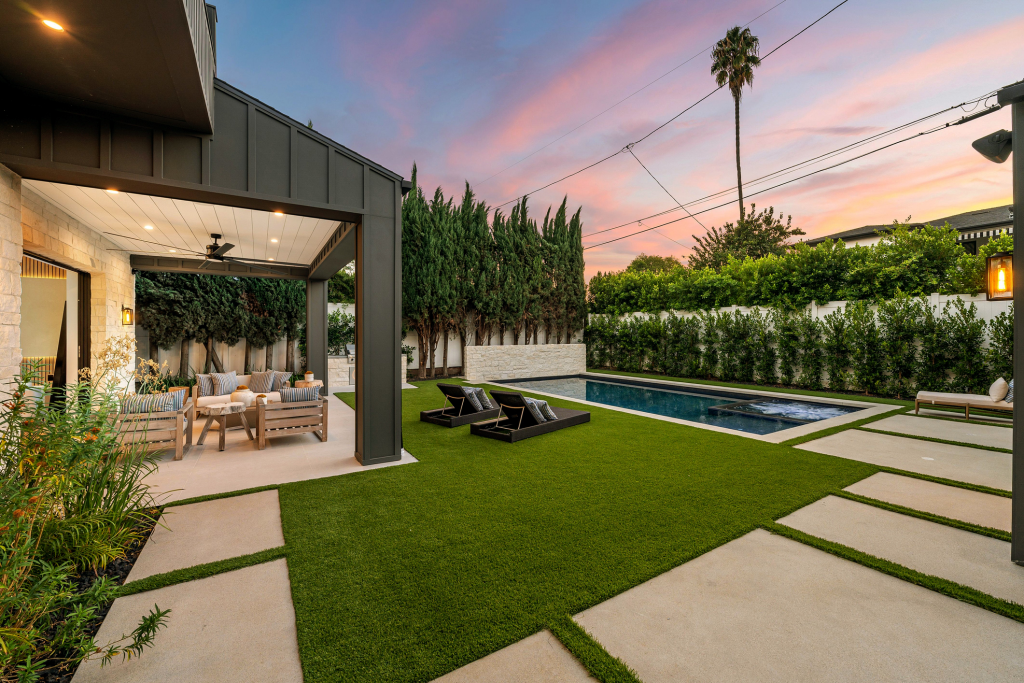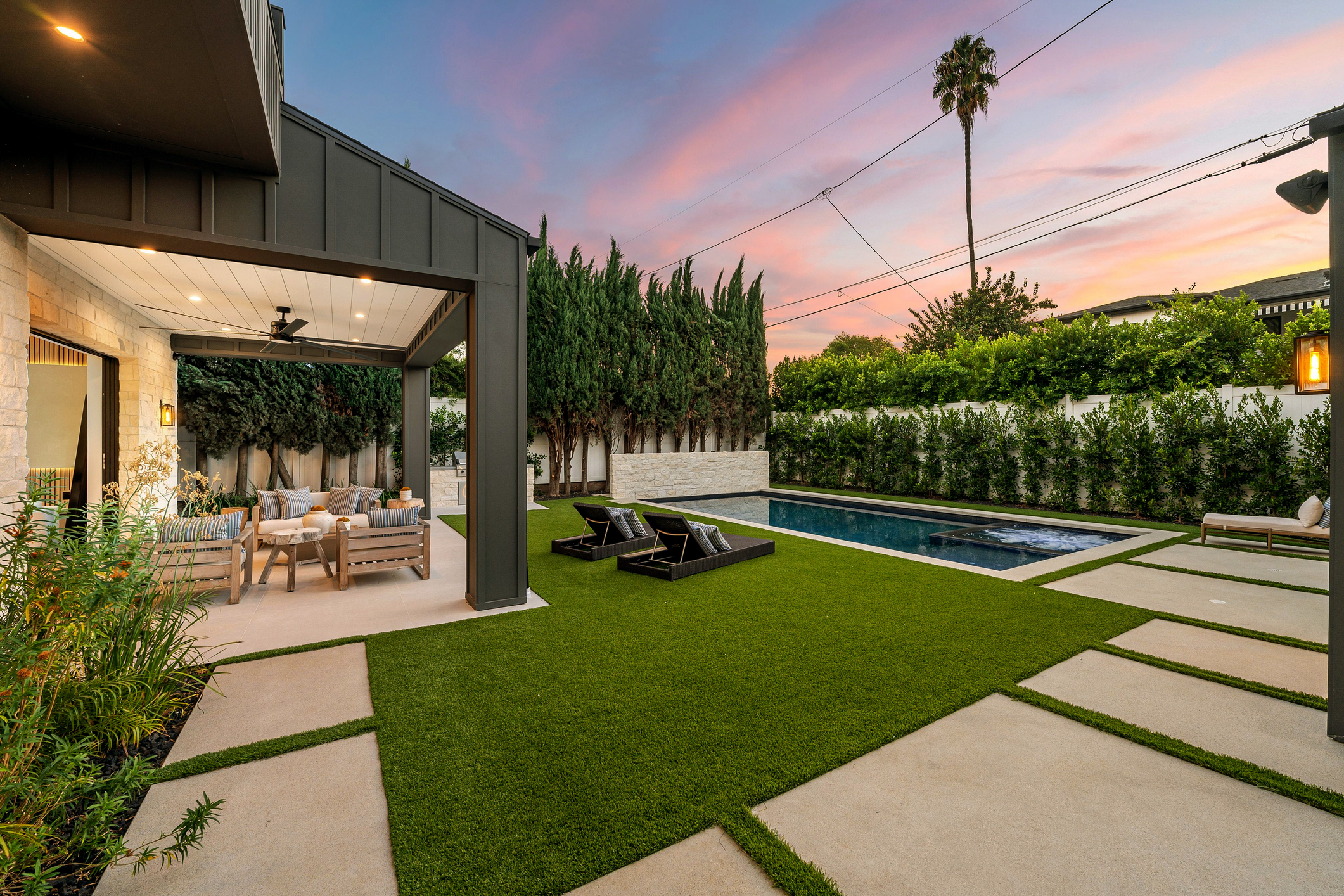A truly great garden doesn’t just shine in spring—it evolves beautifully all year round. By planning with the seasons in mind, your garden can transition naturally from lush summer colour to the calm tones of autumn, through the texture of winter, and back to the freshness of spring.
At Luma Landscapes, we believe a living garden should be designed to grow and transform with the rhythm of Melbourne’s seasons. With smart, climate-aware design and thoughtful plant choices, you can enjoy a beautiful, low-maintenance landscape that always feels alive—no matter the time of year.
Benefits of a Seasonal Garden
Why seasonal change matters
A seasonal garden celebrates change. Instead of fighting the natural shifts in temperature and daylight, it embraces them. This approach brings ongoing visual interest, promotes biodiversity, and creates a deeper connection to your outdoor space.
In Melbourne’s variable climate—warm summers, cool winters, and mild shoulder seasons—working with the environment leads to stronger, healthier plants and easier garden maintenance across the year.
Visual interest and biodiversity
Each season brings its own highlights. Spring might feature blossoming trees and emerging perennials; summer is filled with vibrant colour; autumn shows off foliage and texture; winter provides structure and calm. Together, these moments form a natural cycle that attracts pollinators and supports local ecosystems.
Environmental and maintenance advantages
Designing for seasonal change reduces the need for excessive watering or chemical treatment. By using evergreen plants as anchors and rotating seasonal blooms, your garden becomes resilient and easier to manage year-round. This is especially valuable in Melbourne, where rainfall and temperature vary dramatically between seasons.
Choose Plants for Year-Round Appeal
Creating an evergreen garden doesn’t mean every plant must stay green. Instead, it’s about designing layers of structure and seasonal highlights that evolve gracefully.
Evergreens for structure
Evergreen shrubs like Lilly Pilly, Westringia, and Correa (Native Fuchsia) provide year-round form and colour. Their consistent foliage gives your landscape backbone through the colder months, ensuring your winter garden never feels bare.
Perennials for repeating blooms
A perennial garden keeps things fresh without constant replanting. Think of salvias, kangaroo paw, agapanthus, and lavender—all thrive in Melbourne’s conditions, returning year after year with vibrant colour.
Seasonal annuals for colour and contrast
Adding a rotation of all-season plants like pansies, petunias, or geraniums gives you bursts of colour when needed. These fast growers fill gaps and can be changed as the weather warms or cools.
Melbourne-specific recommendations
- Spring: Tulips, snapdragons, daisies
- Summer: Kangaroo paw, hydrangea, echinacea
- Autumn: Japanese maple, sedum, ornamental grasses
- Winter: Hellebores, camellias, daphne
These combinations ensure continuous texture, colour, and fragrance across the four seasons—perfect for seasonal garden design in Melbourne.
Designing with Seasons in Mind
Grouping by bloom and foliage period
Plan your seasonal landscaping by grouping plants with similar bloom times or foliage cycles. This allows for waves of colour and keeps the garden looking intentional throughout the year.
Layering for depth
Use layers to create visual harmony—canopy trees for height, mid-level shrubs for body, and groundcovers for softness. For example, combine native grasses with evergreen shrubs and flowering perennials to build texture that thrives in both warm and cool months.
Creating winter interest
Winter doesn’t have to mean dull. Mix evergreen structure with winter garden plants like hellebores, camellias, and bare-branched trees such as birch or ornamental pear to add sculptural beauty.
Light, shade, and positioning
Consider how the sun moves through your garden. Summer heat and winter shade differ dramatically in Melbourne, so position plants to balance sunlight, protect delicate species, and optimise growth.
Planning for Seasonal Maintenance
Even a low-maintenance garden in Melbourne benefits from seasonal attention. The key is knowing what to do—and when.
Pruning, planting, and mulching
- Autumn/Winter: Prune deciduous plants and mulch garden beds to protect roots from cold.
- Spring: Replant perennials, feed the soil, and trim back any winter dieback.
- Summer: Keep mulch thick to retain moisture and water early morning or evening.
Cold-weather gardening tasks
- During cooler months, focus on soil health, composting, and planting winter-hardy varieties. Melbourne’s mild winters are perfect for cold-weather gardening, giving you time to prepare for spring’s burst of growth.
What to expect from each season
- Spring: Growth and replanting
- Summer: Maintenance and irrigation
- Autumn: Clean-up and re-mulching
- Winter: Rest and structure upkeep
Planning for Seasonal Maintenance
- A seasonal plant rotation plan keeps your garden looking its best. By mapping your planting and pruning across the year, you’ll know when to prepare, plant, and pause.
Melbourne-specific guide
- Summer: Water-wise natives, shade-loving plants
- Autumn: Replant bulbs and divide perennials
- Winter: Introduce winter colour like hellebores and camellias
- Spring: Fertilise and plant annuals
Tips for each quarter
- Plan ahead—don’t wait for the season to start before planting.
- Record bloom times to refine next year’s planting schedule.
- Keep photos or notes of changes to identify areas that need improvement.
A simple garden layout by season can make it easy to see what will bloom when, creating a continuous display of beauty and balance.
Sustainable and Water-Wise Design
Sustainability is central to Melbourne landscaping. Choosing all-season plants that adapt to temperature changes can dramatically reduce water use and maintenance.
Smart planting
Use drought-tolerant species like grevillea, rosemary, and succulents for structure. These plants thrive in dry spells and bounce back after rain, maintaining beauty through tough conditions.
Mulching and soil care
Regular mulching insulates soil, retains moisture, and reduces weeds. Choose organic mulch to feed the soil as it breaks down—perfect for year-round landscaping in Melbourne.
Irrigation planning
Automated, drip-style irrigation systems can be adjusted seasonally to avoid overwatering in winter and ensure consistency in summer. A professional landscaping service in Melbourne can help design a setup that suits your garden’s layout and plant needs.
Ready to Create Your Seasonal Garden?
A well-planned garden can bring year-round beauty with minimal effort. Whether you want a vibrant evergreen garden, a lush perennial garden, or a complete seasonal landscaping transformation, Luma Landscapes can design a space that grows and changes naturally with Melbourne’s climate.
Book a consultation today to start designing your garden for every season.




